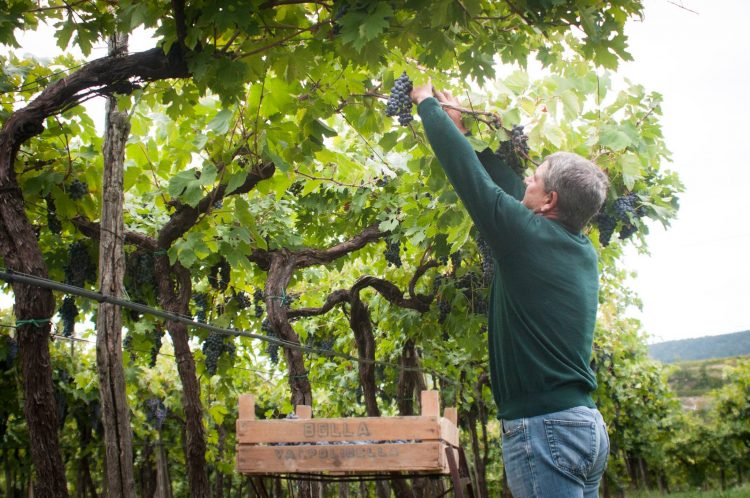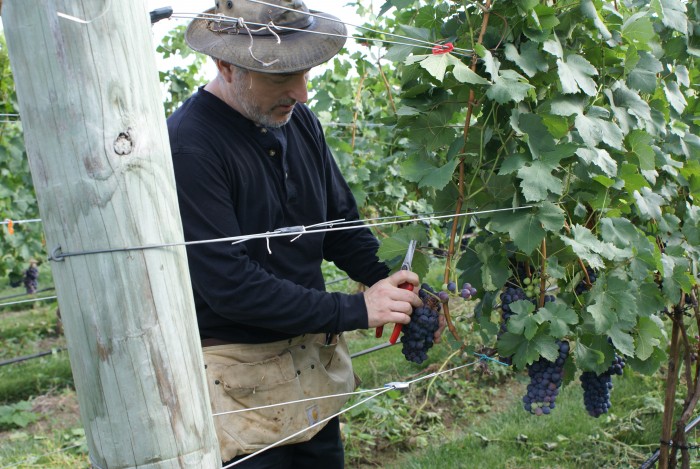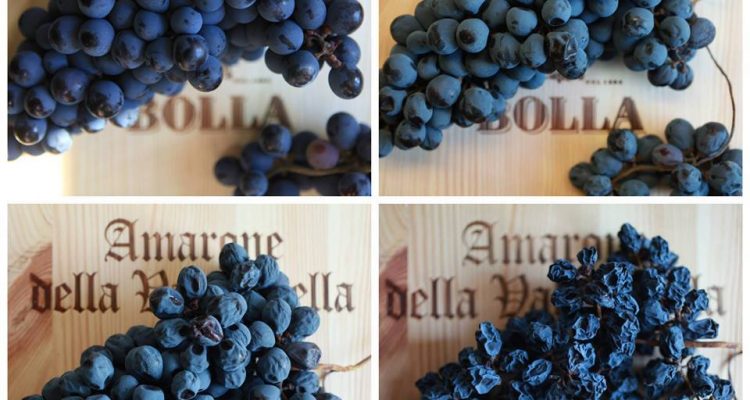Even if they’ve drunk it before, most everyone experiences a serious first encounter with wine – one moment when you know you’ve really latched onto something magical.
When I escaped Appalachia after college, the people I associated with, first academics and journalists, then corporate types, mainly drank cocktails, starting at midday. Two Jack Daniels on the rocks for me, two Martinis for most of my friends served as our amuse-bouches before the average business lunch. I didn’t care much for the few wines I had sampled and can’t really remember much about them except they came in jugs or faux Gothic crockery.
Then one Christmas, one of my older brothers bought me a three-pack of wine that came in a rickety, orange-wood crate with a rope handle. As he drank jug wine, I guess he thought the gift was somewhat fancy.

The wine came from Bolla and consisted of a Soave, a Valpolicella and a Bardolino. The Soave I thought was okay, but on tasting the two reds, I suddenly “got it” about wine, and why it was something special – that Garden-of-Eden allure of simple fruit balanced by a pleasingly tart, dry finish. Although I didn’t know anything about grape varieties at the time, I had fallen in love with Corvina. It’s a funny thing about first loves. They seldom last long, but they can have a haunting effect throughout the rest of your life, your mind drifting back to them from time to time – generally when it shouldn’t. Of course, that simple three-pack didn’t change my life, but it did significantly alter its trajectory, putting me on the track to be first a wine lover and then a wine writer.
In the years that followed, I would have dalliances with wines that had similar profiles – Valdepeñas in the cafes of Madrid, Schiava in the mountains of Alto Adige or old-style Côtes-du-Rhone red, an enduring go-to wine before it started getting fat. You can laugh if you want, but even today after a glass of finely-pedigreed Bordeaux or a haunting, brooding Burgundy, my mind will occasionally drift back to the simplicity and beauty of a Corvina.
Those who are not familiar with the variety are probably familiar with one wine it produces. In addition to being the primary grape of Valpolicella and Bardolino – along with blending varieties Rondinella and Molinara – Corvina is best known for the stellar Amarones produced from its air-dried grapes, as well as the recioto and ripasso iterations.
Although I regularly drank Amarone through the years, I drifted away from the simple Corvina until a nearby winery in Southeast Pennsylvania, Va La Vineyards, opened up about 15 years ago. Its winemaker and owner, Anthony Vietri, loves northern Italian grape varieties. Although his long-term plan on opening was to concentrate on four basic blends, for the first couple of years he made a varietal Corvina that re-ignited my love affair with the grape and the wine. It had the same flavor profile, though with more complexity, I had first encountered years ago.
“Those Corvina vines are now entering their 20th leaf in this vineyard,” Vietri told me recently. “I find Corvina to be quite an unusual vine. We decided to grow it VSP [vertical shoot positioning] here, as opposed to overhead [pergola] methods of Valpolicella, which I am just personally adverse to. For the first several years, we found it to be a difficult vine to grow, and on two occasions I actually had purchased other varieties to replace it with.
“We found it to be very vigorous, very late ripening, almost always the last vine to cease growing, plagued by green seeds even at harvest, and its juice had very little color,” Vietri continued. “Depending on how it is pruned, it can be frighteningly over-bearing, and we used to refer to it as ‘the wall of grapes.’ However, it just held some strange appeal to me; we eventually started to learn the unusual ways of this vine, and made adjustments over time.”

For the past several years, Vietri has made an entrancing, praise-winning blend of Corvina and Nebbiolo called “Cedar,” a heretic combination of the Piemonte and Verona regions that would probably enrage doctrinaire purists in the Old Country. Although a few wineries on the East Coast, included Va La, have had great success with Barbera, few have tried to grow Nebbiolo and fewer still Corvina.
For a variety of reasons, I passed up a recent invitation to visit Verona and its Corvina-loving wineries, so I have no tales of clandestine reunions with my old love in its native cellars. One of the highlights of the trips would have been visits to the producers on Lake Garda of Chiaretto, the dry rosé that the region wants to export to the United States in greater quantities.
That would have been fun, like going back to my 30th class reunion. “I know you changed through the years, Corvina, but so have I.”
In the meantime, I see that Bolla has a Bardolino Chiaretto for only $9. I think I’ll go buy a bottle for old-time’s sake.

